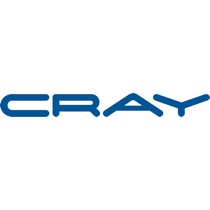
Recent IDC surveys of the worldwide high-performance computing (HPC) market consistently show that cooling today's larger, denser HPC systems has become one of the top challenges for datacenter managers. These surveys reveal a notable trend toward liquid cooling because this method is inherently more efficient than air cooling. But not all forms of liquid cooling are equally efficient. In recent years, warm water cooling has emerged as an effective alternative to established methods that employ chilled liquids. This Technology Spotlight reviews the liquid cooling trend and the innovative use of warm water cooling in the Cray CS300 cluster supercomputer to reduce capital expense and operating costs.
Power and Cooling: A Top Issue for HPC Datacenters
In IDC's worldwide surveys since 2006, power and cooling has consistently ranked among the top 3 concerns for HPC datacenters, right behind price performance and the perennial quest for bigger budgets.
The Trend Toward Liquid Cooling - Cray CS300
In Power and Cooling Practices and Planning at HPC Sites, an IDC worldwide study, the surveyed sites confirmed that cluster compute densities have increased substantially with the proliferation of multicore/manycore processors, double-dense blade form factors, wider and deeper cabinets, and related developments. Most sites employed air cooling, but all of the sites indicated they were exploring alternatives to meet their future cooling needs (see Figure 1):
- 54% of the sites were considering liquid cooling alternatives. Within this majority group, 64% of the sites were evaluating liquid cooling using chilled water and 43% were looking at liquid cooling in locus (i.e., at the rack, board, or chip package level). Sites were allowed to name more than one approach under consideration.
- Just 18.9% were evaluating air-cooled approaches. An additional 14.9% were assessing cooling based on alternative energy sources (geothermal, solar, and wind energy), while 12.2% were
looking at methods fitting none of these categories.
Error: Contact form not found.
All information that you supply is protected by our privacy policy. By submitting your information you agree to our Terms of Use.
* All fields required.




